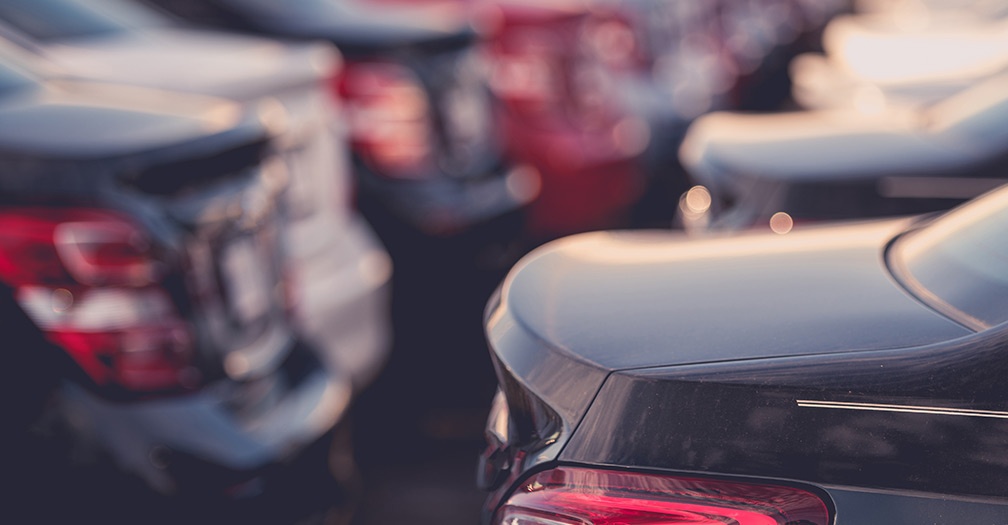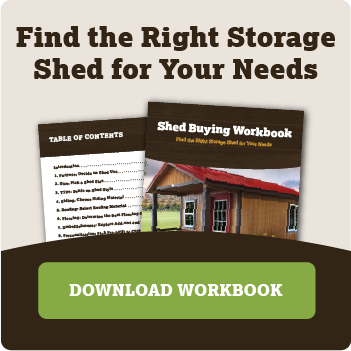Things to Look for When Buying a Used Car
by Dakota Storage Buildings, on November 19, 2018
When buying a used car, do some research beforehand, and take a vehicle inspection checklist along with you. Here are some other best practices.
Buying a used car can be a tricky process because no two cars are the same. Each vehicle has a unique history which can either work in your favor or become your biggest nightmare. To set yourself up for success—finding the right car at the right price with the best mileage and no major issues—be sure to do thorough research and follow these best practices.
Budget
Before starting the research phase of the buying process, set your budget. Deciding this before shopping will help narrow down options immediately. Calculate how much you can afford to spend and how you’re going to pay for it. And remember, buying a used car may mean you need some additional funds to fix any unexpected issues once you drive off the lot.
Research
To start, make a list of the makes and models you’re targeting. Once you have your list, research each to find out price points, common defects, average repair costs, and other valuable information.
Kelley Blue BookOnce you know the make and model of the cars you're interested in, look them up in a pricing guide such as Kelley Blue Book. You can use the guide to estimate the market value based on factors such as age, mileage, and options. Be sure to write down the market value. When it comes time to negotiate the price of a vehicle, you’ll want to have this information with you so that you can negotiate knowledgeably.
Kelley Blue Book also contains information and estimates regarding the car’s maintenance schedule, typical repairs, and depreciation. Some vehicles are cheap to buy but can cost a lot in the long run. Keep the total cost of ownership in mind as you conduct your research. Knowing this may even change the vehicles you were initially interested in pursuing.
Window Shopping
Auto listing publications and online shopping are a great way to window shop. It’s convenient and arguably easier than driving around from lot to lot, wasting fuel. While there are some setbacks to shopping online or flipping through a print publication, there are far more benefits. Here are some helpful places to start.
- Craigslist. This site lists used cars sold by both dealers and individuals. This is a great way to find affordable vehicles, though the variety is limited. Also, you need to be careful of scammers.
- Autotrader. On this site, sellers pay to list their cars. Paid sites are better at keeping out scammers and usually provide a wide range of vehicles. Autotrader allows you to easily filter by year, make, model, price range, and features.
- Autolist. This site is an aggregator which means it pulls together information from many different areas into one searchable site.
- CarMax. This online used car superstore has a large inventory but no-haggle pricing. This means prices are clearly posted on the cars and negotiating is not allowed.
As you find cars that you like, keep a running list that includes:
- Make, model, and year
- Price
- Mileage (if provided)
- Drivetrain (4x4, AWD, FWD, or RWD)
- Highlights of interest (color, leather seats, sunroof, upgraded audio system, etc.)
- Location (where the vehicle is currently located)
Vehicle History Report
Some sellers provide a CARFAX report for each car they list; others do not. Ideally, you’d be able to see a vehicle history report before moving forward with a car. If the dealership doesn't provide a report, you can ask them for the vehicle identification number (VIN) so that you can get a report of the car’s history from CARFAX or AutoCheck. While it may cost you some money to obtain the report, it’s a quick way to know if you should seriously consider buying this car.
With just a handful of potential cars now on your “hot list,” it’s time to see the vehicles in person and get more detailed information so that you can make a well-informed decision.
See the Car For Yourself
It’s nice to window shop from the comfort of your home or coffee shop, but once you’ve got a list of 3-5 vehicles that fit the bill, it’s essential to see the car in person.
In addition to the state of the car’s paint job, there’s a lot to check. Here are a few things to do when inspecting your car:
- Look for oil leaks on the asphalt under the car
- Look at the exhaust pipes for black soot (an indicator that the car is burning oil)
- Look for signs of body rust
- Check the tires to evaluate wear and tear
- Make sure the transmission shifts smoothly (no jerks or even little jerks!)
- Look for the vehicle’s spare tire, jack, and jack handle
It’s a great idea to use a checklist to keep track of these things and more. The insurance company, Nationwide, has a handy vehicle inspection checklist. Print it out and take it with you when you visit your car picks in person.
A few additional items that you may want to add to your checklist include whether or not there is a trade-in option and if there are warranty options available.
We all know that test driving a used car before buying it is a standard best practice. However, less known that it’s also a best practice to take the car to your mechanic for an unbiased once-over. Why not knock out both with one stone? Consider driving the car to and from your mechanic—you’ll get their opinion, and you’ll get a good feel for how the car rides.
Used Car Buying Tips
Always discuss the price with the sellers. There’s usually room for negotiation. If you notice that something isn’t working as it should or if there is minor but visible damage to the car that wasn’t listed on the vehicle history report, this is the time to refer to your notes including what you gleaned from Kelley Blue Book.
It may be worth your time to call your car insurance agent before shaking on the deal to make sure the cost of your insurance won’t drastically increase as a result of the purchase.
And remember, once you’ve signed on the dotted line, there’s still more to do. Here’s short reminder list.
- Update car insurance policy
- Update parking pass
- Update toll roads pass
- When you receive the title in the mail, file it in a safe place
Other helpful resources:
- How to Buy a Used Car by NerdWallet
- 10 Steps to Buying a Used Car by Edmunds
- Guide to Buying a Used Car by DMV.ORG
Storing Your New-to-You Vehicle
Cars are expensive—even used ones—so take care of them. If you don’t already have a garage, now would be a good time to consider getting one. Here are a few benefits of having a garage on your property.
- Elements like ice, snow, and hail can damage your vehicle in many ways, but the damage caused by these can be avoided by parking your car in a garage.
- Prevent break-ins and external tampering of your vehicle by parking it in a garage.
- A garage will protect your vehicle from residential accidents. Bicyclists or other cars passing by could damage your vehicle if you park on the street.
- Protect the interior of your car from the sun. Heat and intense sun rays can damage your dashboard, steering wheel, and seats—especially if you have leather interior.
- Keeping your car parked in a garage can also help when you’re running late and don’t have time to scrape ice or brush off snow.
Just as you researched your car before purchasing, we recommend that you also research storage building manufacturers and garage options before buying one.
We believe we offer the best value—we sell the highest quality building for the best price around. Plus, we make garage buying easy. Start by exploring our Everyday Garage Package and Gearhead Garage Package options.
Read more:
Life is demanding and full of choices. We’d love to make just one aspect of your life a little easier. That’s why it’s our mission to provide products that help you organize your life and keep your possessions safe. Our storage buildings are built well and worth every penny.

























